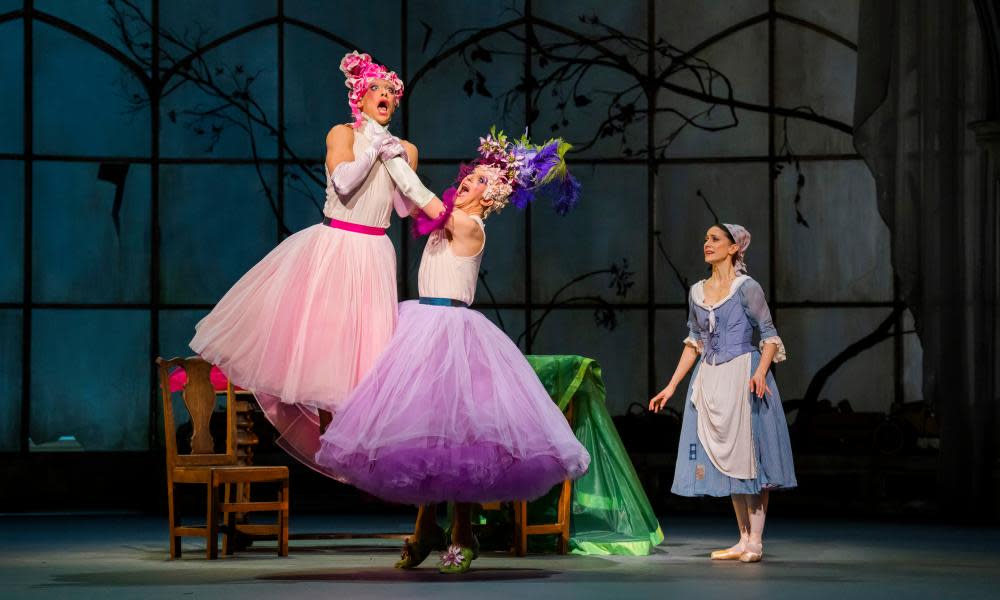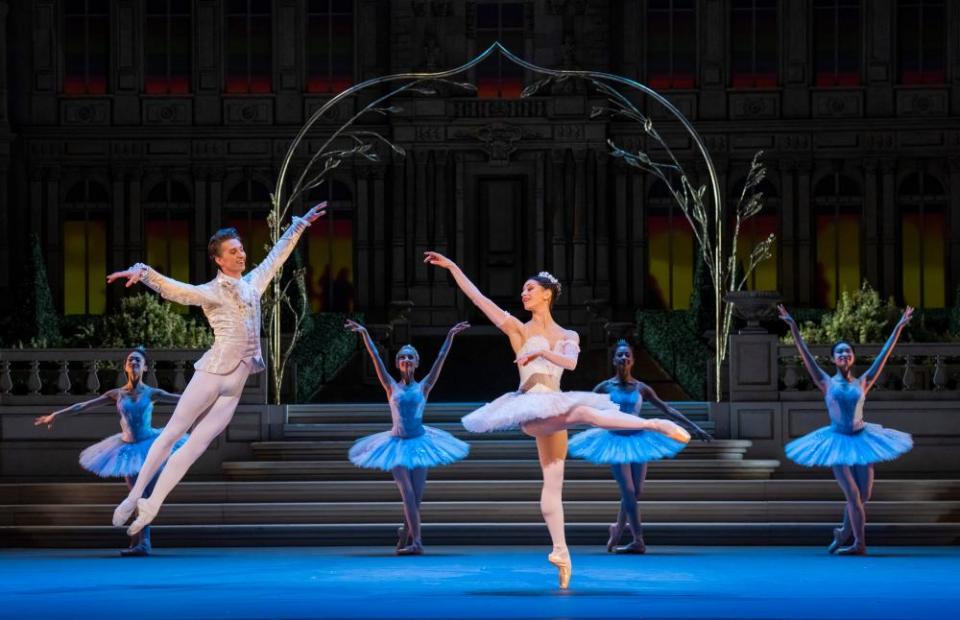Cinderella review – Ashton’s classic fairytale with extra frills

First the good news. Frederick Ashton’s Cinderella, created in 1948 and so the first full-length British ballet, is back after too long an absence. Its swooning Prokofiev score, full of sharp reminders that midnight is about to strike, is as entrancing as ever.
On opening night, for this new Royal Ballet production, it starred Marianela Nuñez, who brings to the heroine a whole-hearted goodness, delicate arched feet and a speed and lightness that make her radiant both as a put-upon drudge dancing with a broom and as a transformed beauty, winning her prince’s heart at the ball.
As that prince, Vadim Muntagirov is warmly attentive. The scenes where they seem to follow each other around the stage, as if tugged by an invisible thread, melting into one another’s movements, floating into one another’s arms, have a gentle loveliness alongside the grandeur.

The entire company rises to the challenge of Ashton’s intricate choreography with some aplomb. You can see how hard it is, how fast he makes their feet work and how insistently he pushes the shape of their bodies so that there is a constant flow of movement from head to foot, creating subtle diagonals where most choreographers would present a step straight on.
The bad news? Few ballets have a more troubled design history than this Cinderella, as if the shoe never quite fits. The last revival was unremittingly brown. This new production tips the balance the other way. Tom Pye’s sets are big and gracious and much enlivened by Finn Ross’s videos that turn Cinderella’s home into a tapestry of the seasons. But Alexandra Byrne’s costumes are too fussy and citrus-bright. They work best at their simplest – icy blues for the corps de ballet of stars, flowing mauve for the fairy godmother – but their elaborate detail is too often over the top. You can’t see the beauty of the steps for all the overlaid glitter.
The stepsisters – Ashton’s tribute to the pantomime tradition of the dame – suffer most. These are meant to be women who care about their appearance, and Gary Avis (as the big bossy one) and Luca Acri (as the delicate, shy one) take care to make them as real as their conception allows. But they wear dresses that show their vests when they go to the ball. It’s a travesty of travesti.

 Yahoo News
Yahoo News 
